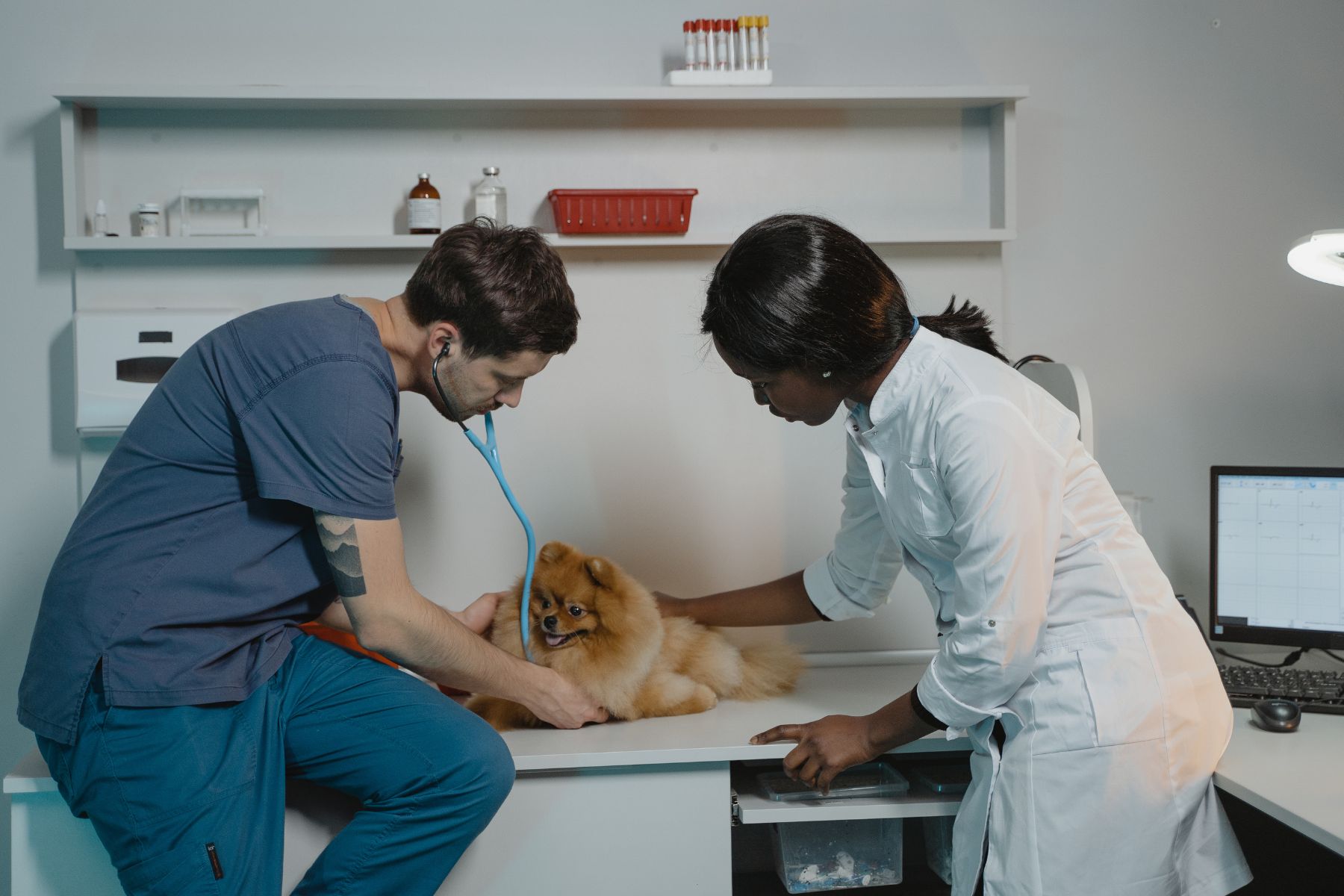Starting your own veterinary business is an exciting time, and deciding how to market it can be fun! However, with so much to do, it can also seem like a daunting task. If you’re not sure where to begin, then take a look at our list of things to consider.
Before the marketing can start…
Before you can start marketing your practice you need to get one! Scoping out a potential location is the first thing to do, ensuring there are enough pet owners in the vicinity to sustain your business. Check how much of the area is residential, as well as gauge whether they are likely to be homeowners or renters and whether there are any new housing developments on the horizon.
Give some thought to whether you want to buy or rent as there are pros and cons for both. Renting will be easier to manage financially, particularly in the early days of your business. Buying will allow you to invest in the building itself, as well as give you some more independence, as you won’t need a landlord’s permission. Either way, the premises may need planning permission for a change of use which can take time to go through. The local council may also have restrictions around things like hospitalisation of inpatients so you will also need to check this out.
Marketing your veterinary business
The building (or mobile vehicle)
One of the best ways to market your new business is through careful selection of your building. Ideally choose somewhere in a prominent location, so that potential clients can see your practice when they are passing through the area. Having a smart frontage and clear signposting that looks inviting will help draw people in. Choosing a premises with easy access and good parking will also go down well with new clients.
If you are setting up a mobile practice, then the same goes for your van’s presentation. A smart vehicle with clear branding will look professional and act as an advertisement for your business as you are driving around the local area.
Branding
Branding is important as your clients need to make a positive connection with your practice name and logo. The name of your practice will need to be checked with your governing body for any objections (the Royal College of Veterinary Surgeons in the UK), and you’ll need to pay attention to the use of the term Limited/Ltd. Some companies can help you to develop your logo, but it might be worth familiarising yourself with your competitors to look for a way to make yourself stand out.
Website
Your website will be one of the first places that a potential client will visit. It must be clear and contain accurate information including your practice name and logo, your contact details, and the practice opening hours. Personalising it with team profiles and pictures, services that you offer and a regularly updated veterinary blog can all help you to stand out. The latter can be outsourced to a veterinary content creator if you are strapped for time.
Social media
Most practices use Facebook, as you can upload a mixture of pictures, video, and text posts as well as reach a wider audience range than you might on some other social media platforms. However, you may wish to explore other options too like Instagram, Twitter, or YouTube. Social media is a great way of directly communicating with your clients and reaching them with news or updates instantly.
Getting people talking and sharing your posts will also raise your practice profile, and ‘like and share’ competitions are a great way to get started. Targeted advertisements and boosted posts also tend to be more cost-effective and generate more new clients than traditional marketing techniques (like leaflet drops and newspaper adverts).
Search Engine Optimisation
Make sure your website is easy to find by utilising SEO for vets. For clients to find your practice easily you need to be at the top of a search engine’s results page. Using certain keywords on your website can help with this, like the name of your town or region. Responding to online client reviews and ensuring that information on business directories is up to date (such as Yelp) will boost things.
You can also pay for an advert on websites like Google so that a link to your website appears higher on the search results of local vet practices than an ‘organic competitor’. This type of location-based advertisement targets an audience within a certain distance from your business. You only pay for these ‘pay per click’ adverts when someone clicks on one, so it can be a cheap way to get your business name seen.
Uniforms and stationery
If you want to give your practice a cohesive look then a branded uniform is a great way of doing this. It allows pet owners to easily identify staff members and looks professional. Don’t forget to also have your logo put on your stationery so that letters and appointment cards are all branded with your business identity.
Special offers
Often the way to bring people through the door in the first place is a financially-driven incentive. Offering something like a reduced-price first consultation for all new clients, a refer-a-friend scheme, or discounts on common procedures (like dentals or vaccination courses) can be helpful. Once the client is in the building you can showcase your quality service which should bring them back to you time and time again.
Speaking to a local charity and offering them a discount on some of your services can also be a good move in the quieter early days. Not only will it give you some work to do while your client base is building but you will benefit from word of mouth.
Meeting the local community
Taking part in local events helps you to put your name out into the community. Holding a stall at a local dog show for example or giving a talk at the local Women’s Institute can help your business appear more personable. Hosting things like dog first aid courses at the practice or an open day can be worthwhile too and always goes down well on social media. Branded freebies like cupcakes, pens, dog slip leads or balloons can be useful at these events.
Don’t forget…
With so many things to do it can be easy to forget some of the more mundane tasks when setting up your veterinary business. Getting insurance for your premises and registering for tax (HM Revenue and Customs in the UK) should be high on your list of things to do. Professional liability coverage is also important as well as deciding whether you will be using a separate out-of-hours provider. Then there are things like organising your utilities including water, electricity, and internet providers. Your premises will also need to be registered with the RCVS (in the UK) which will mean you are subject to regular inspections from the Veterinary Medicines Directorate (VMD).
Conclusion
Hopefully, our guide has given you some useful marketing ideas that will help you to hit the ground running. If you’re still stuck, then reaching out to a company that specialises in veterinary marketing is a good idea. Above all, remember that one of the best ways of building your veterinary business is through the quality of the service you deliver – word of mouth and good online reviews are worth their weight in gold.
FAQs
How can I promote my veterinary business?
There are many ways that you can promote your veterinary business, but one of the best ways is word of mouth. By delivering an excellent service, clients will recommend you to their friends or leave good online reviews, which will in turn help to generate new customers.
How do I get new veterinary clients?
Digital marketing has taken over from more traditional methods (such as leaflet drops or radio ads). Make sure that your website appears towards the top of a search engine results list and that you have an active social media presence. Special offers and discounts also get people through the door.
How much should vets spend on marketing?
Your marketing budget should include things like brand development (e.g. help with logo and website design), customer promotions, locally targeted adverts, product giveaways (branded pens, magnets, balloons etc), leaflets and print advertisements. One marketing website suggests that approximately 2-5% of your sales revenue should go into marketing. You may need to spend more in the early days of your business though.
-
Content Planning for your Vet Practice
Your digital content is an important part of the marketing strategy for your business but is also an online representation of your practice. If your content proves popular, it could… Read more
-
Running Great Vet Email Campaigns (Our Top Tips)
If you’re a vet practice manager, owner, or marketer, you might already be contacting clients by email, either with practice news, appointment reminders, or clinical information. But have you considered… Read more
-
Marketing for Veterinarians: Making a Marketing Plan
For some vets, marketing can feel like a challenge. With so many bits of jargon and different costs involved, it can be hard to know where to begin! The good… Read more
-
What makes ‘good’ vet blog content?
Many vet practices have an online blog now, it’s a great way of engaging with customers remotely. But how can you make sure yours stands out? With so many benefits of… Read more
-
3 veterinary blog post ideas for every month of the year
There are so many benefits of a vet practice blog but it can be hard to come up with inspiration for regular fresh content! If you’re not sure what your practice should… Read more


